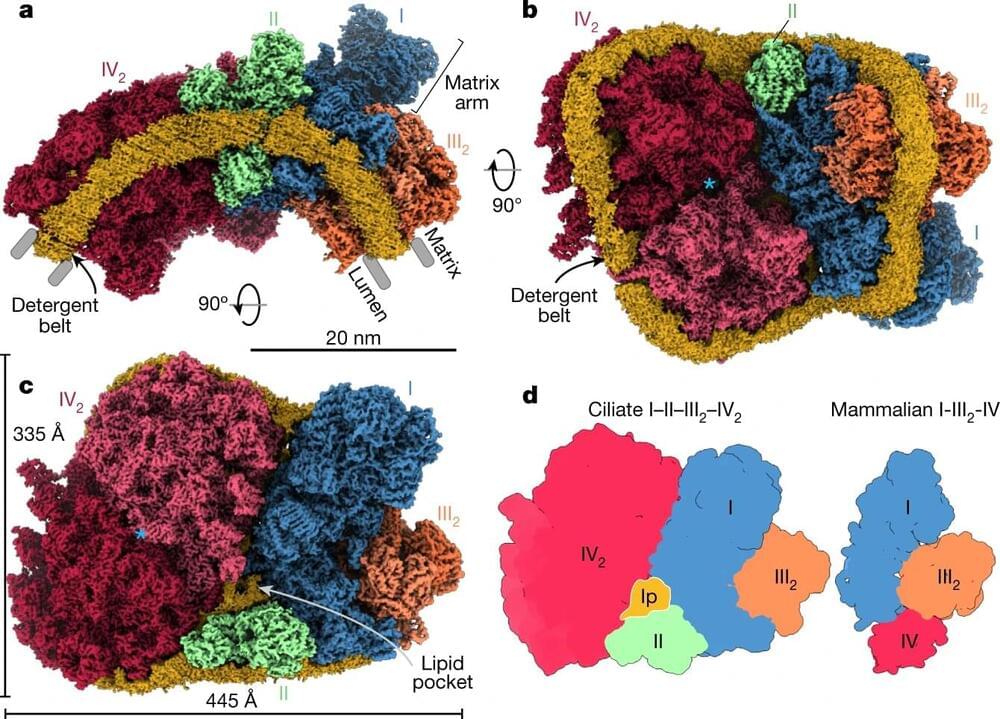😗
Eukaryotes generate the energy for survival through cellular respiration in mitochondria by a process known as the oxidative phosphorylation. In this process, nutrients and oxygen are converted into a chemical form of energy: ATP. This is achieved with a proton gradient built up by the electron transport chain inside mitochondria.
The gradient is driven by a series of four respiratory complexes in the inner mitochondrial membrane. A new study published in Nature combined tomography and molecular simulations to shed light on bioenergetic macro-assemblies and how they shape mitochondrial membranes. It identified that in Tetrahymena thermophila—a free-living single cell eukaryote found in ponds and lakes—all four respiratory complexes are associated.
They form a massive 5.8 megadalton supercomplex of 150 proteins with at least 300 transmembrane helices and 311 lipids. Owing to subunit acquisition and extension, Complex I binds a dimer of Complex III that is tilted by 37 degrees. Complex I also associates with the Complex IV dimer, generating a gap that serves as a binding site for Complex II.










Comments are closed.